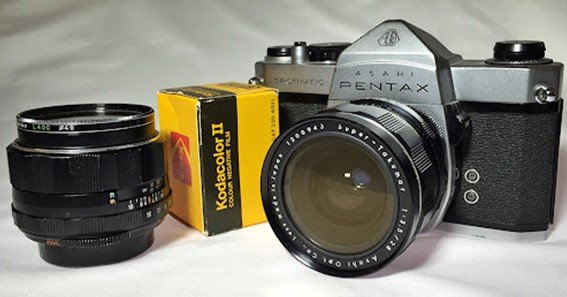Kodacolor II, a significant advancement in color negative film technology, was introduced by Eastman Kodak in 1972. This film marked the debut of the C-41 development process, which offered improved image quality and simplified processing compared to its predecessor, the C-22 process.
The Introduction of Kodacolor II
In 1972, Kodak unveiled Kodacolor II alongside the new 110 film format, aiming to provide photographers with enhanced color reproduction and greater ease of processing. Initially, Kodacolor II was available exclusively in the 110 format, allowing processing labs time to adapt to the new C-41 development process. By 1973, Kodak expanded the availability of Kodacolor II to other film formats, including 35mm and 120 roll film, effectively phasing out the older Kodacolor-X film and the C-22 process.
The C-41 process introduced with Kodacolor II offered several benefits over the previous C-22 process:
-
Improved Image Quality: Enhanced color accuracy and finer grain structure.
-
Simplified Processing: Standardized development times and temperatures, making it more accessible for processing labs.
-
Increased Film Stability: Better archival qualities, ensuring the longevity of developed photographs.
These advancements contributed to the widespread adoption of Kodacolor II among both amateur and professional photographers.
Legacy of Kodacolor II
Kodacolor II remained a popular choice throughout the 1970s and into the early 1980s. Its introduction set the stage for subsequent innovations in color negative films, leading to the development of faster films with higher ISO ratings and improved color rendition. The C-41 process established during this era continues to be the standard for color-negative film development today.
Frequently Asked Questions
-
When was Kodacolor II introduced?
- Kodacolor II was introduced by Kodak in 1972.
-
What development process did Kodacolor II use?
- Kodacolor II utilized the C-41 development process, which replaced the older C-22 process.
-
In which film formats was Kodacolor II initially available?
- It was initially available in the 110 format in 1972 and expanded to other formats like 35mm and 120 roll film by 1973.
-
What were the advantages of the C-41 process over the C-22 process?
- The C-41 process offered improved image quality, simplified processing, and increased film stability.
-
How long was Kodacolor II in production?
- Kodacolor II was produced from 1972 until it was phased out in the early 1980s, making way for newer film technologies.










